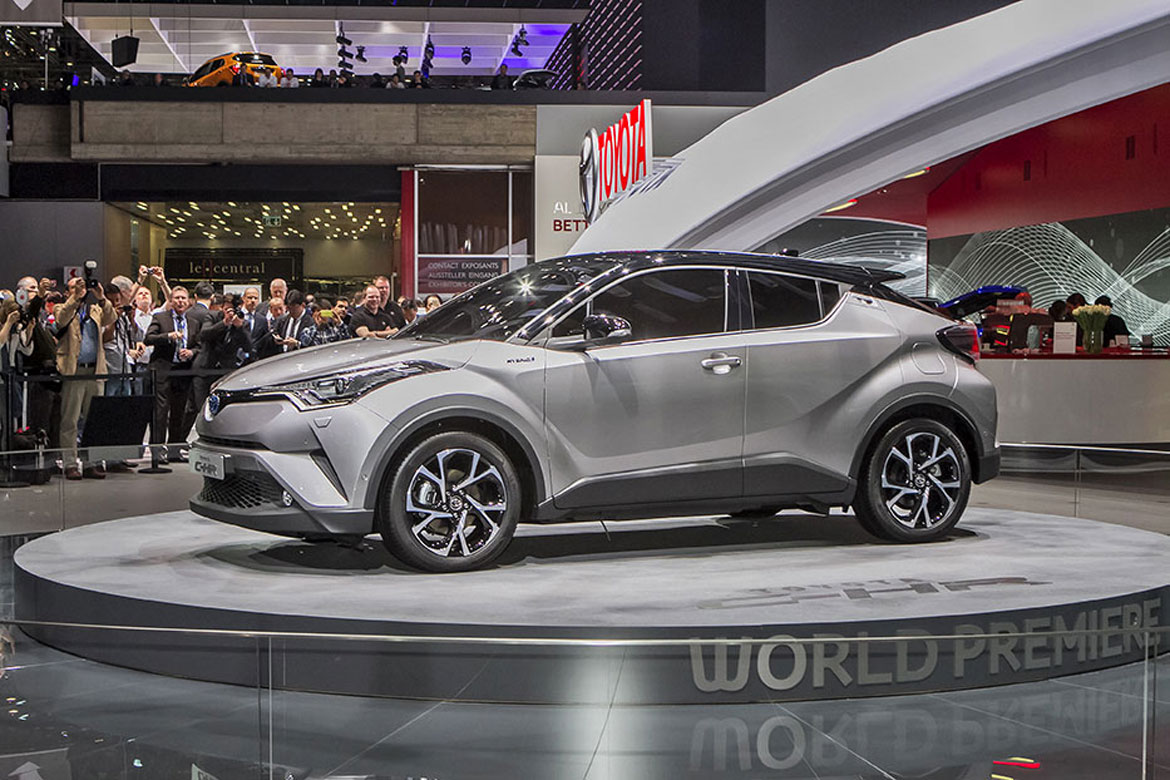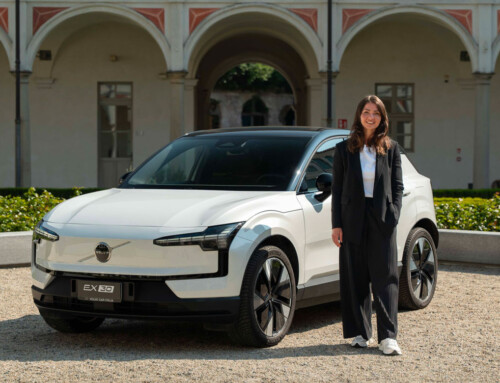The Toyota C-HR makes its entrance at the Geneva Motor Show, with a captivating, sculpted look, the result of polished surfaces that recall the facets of a precious stone.
The new crossover from the Japanese carmaker is based on the innovative TNGA platform, the same as the Prius, which makes it possible to develop cars with a very low centre of gravity, and thus a more enveloping driving position and enhanced handling, as well as a significant reduction in rolling. The new approach to the design of the engine compartment, which emphasises the low position of the various components, results in a lower front bonnet, and better front visibility.

The C-HR is the fruit of the combined work of several Toyota design centres, coordinated by Kazuhiko Isawa (the project chief designer), and it is faithful to the stylistic features of the two concept vehicles that preceded it – first the 3-door version, presented at the Paris Motor Show in 2014, and then the 5-door version, revealed in Frankfurt last September – with a sporty look that tapers towards the rear end, and a coupé silhouette.
The front develops the “Keen Look” typical of Toyota. The thin upper grille extends towards the LED light clusters which incorporate the direction indicators, contrasting with the lower, larger grille with its trapezoid shape, and combining with the sturdy three-dimensional bumper that incorporates the large wheel arches to reinforce the car’s road presence.

The side view, with black under-door panels that extend towards the front and rear wheels, gives a strong sense of dynamism, projecting towards the top of the bodywork, which tends to taper towards the rear end. The waistline is well defined and clean cut, separating the upper half, with its fluid, sinuous lines, from the more sculpted lower half. The C pillar is painted dark at the top, so the side windows seem to meet in the rear window, as the roof merges into the tail.
With these strong stylistic features, the external design tries to meet the expectations of a well-defined target of young, dynamic users who interpret the car as an extension of their own personality. You will have to wait a few more months to discover the car’s interior features (the complete design story will be published in A&D 219).











